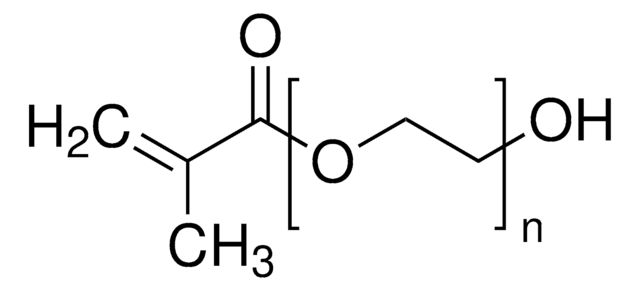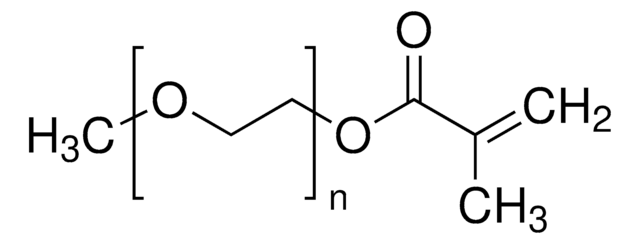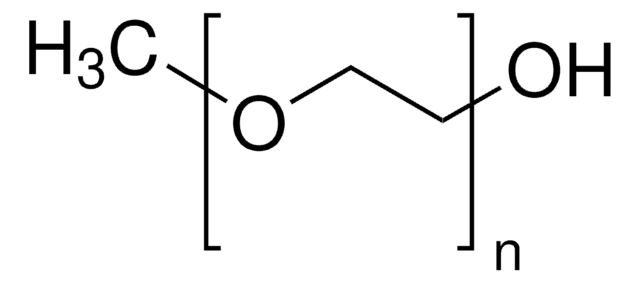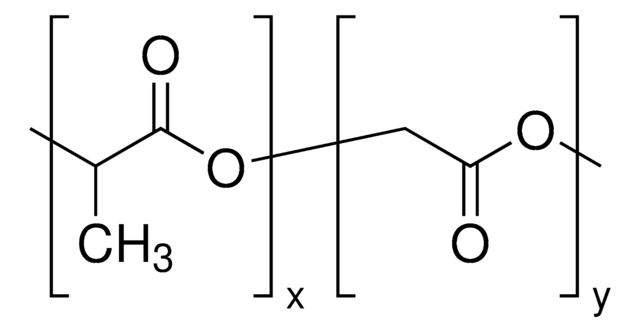730270
Poly(ethylene glycol) methyl ether acrylate
average Mn 2,000, acrylate, methoxy, MEHQ as inhibitor, chemical modification reagent polymerization reactions
Synonym(s):
Polyethylene glycol, Acryl-PEG, Methoxy PEG acrylate, Methoxy poly(ethylene glycol) monoacrylate, Poly(ethylene glycol) monomethyl ether monoacrylate, mPEG-acrylate
About This Item
Recommended Products
Product Name
Poly(ethylene glycol) methyl ether acrylate, average Mn 2,000, contains MEHQ as inhibitor
form
solid
Quality Level
mol wt
average Mn 2,000
contains
MEHQ as inhibitor
reaction suitability
reagent type: chemical modification reagent
reaction type: Polymerization Reactions
transition temp
Tm 49-54 °C
density
1.09 g/mL at 25 °C (lit.)
Mw/Mn
<1.1
Ω-end
acrylate
α-end
methoxy
polymer architecture
shape: linear
functionality: monofunctional
storage temp.
−20°C
Looking for similar products? Visit Product Comparison Guide
Preparation Note
Storage Class Code
11 - Combustible Solids
WGK
WGK 3
Choose from one of the most recent versions:
Certificates of Analysis (COA)
Don't see the Right Version?
If you require a particular version, you can look up a specific certificate by the Lot or Batch number.
Already Own This Product?
Find documentation for the products that you have recently purchased in the Document Library.
Customers Also Viewed
Articles
Accumulation of biological matter at surfaces is an inevitable event in virtually any environment in which natural and man-made materials are used. Although sometimes fouling of surfaces with biomolecules and bioorganisms has little consequence, biofouling must be minimized or controlled in order to maintain performance and safety of devices and structures.
Progress in biotechnology fields such as tissue engineering and drug delivery is accompanied by an increasing demand for diverse functional biomaterials. One class of biomaterials that has been the subject of intense research interest is hydrogels, because they closely mimic the natural environment of cells, both chemically and physically and therefore can be used as support to grow cells. This article specifically discusses poly(ethylene glycol) (PEG) hydrogels, which are good for biological applications because they do not generally elicit an immune response. PEGs offer a readily available, easy to modify polymer for widespread use in hydrogel fabrication, including 2D and 3D scaffold for tissue culture. The degradable linkages also enable a variety of applications for release of therapeutic agents.
Devising biomaterial scaffolds that are capable of recapitulating critical aspects of the complex extracellular nature of living tissues in a threedimensional (3D) fashion is a challenging requirement in the field of tissue engineering and regenerative medicine.
Our team of scientists has experience in all areas of research including Life Science, Material Science, Chemical Synthesis, Chromatography, Analytical and many others.
Contact Technical Service




